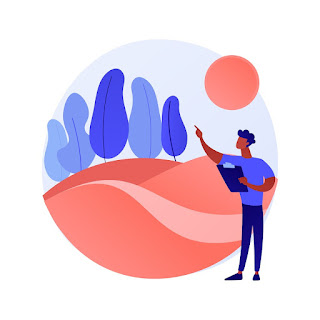Sahabat Latis, ketika sesuatu terjadi, misalnya bencana atau kendala lainnya, pasti kedua hal tersebut memiliki penyebab dan efek setelahnya. Dalam bahasa Inggris, kita menyebutnya sebagai cause and effect.
Cause and effect atau sebab-akibat menerangkan tentang apa yang terjadi, kenapa sesuatu itu bisa terjadi, apa alasan atau motivasi yang melatarbelakanginya, serta akibat atau penyelesaiannya.
Lalu, bagaimana caranya untuk menjelaskan cause and effect dalam bahasa Inggris? Keep scrolling yuk agar lebih paham.
Cause and Effect
Sahabat Latis, pada materi kali ini kita akan belajar tentang cause and effect. Mulai dari definisi cause and effect dan ciri-ciri kalimat yang mengandung cause and effect.
Tidak hanya itu saja, kita juga akan belajar tentang cara mengekspresikan cause and effect dalam sebuah dialog.
Baca juga: Bimbel CPNS Online
A. Cause and Effect dan Indikasinya
Cause atau akibat menyatakan tentang kenapa sesuatu itu bisa terjadi. Sedangkan effect menyatakan tentang hasil dari penyebab tersebut. Tepatnya, “cause” memberikan hasil, konsekuensi, hingga kondisi yang disebut sebagai “effect”.
Lalu, bagaimana cara mengetahui bahwa sebuah kalimat atau bacaan itu mengandung cause and effect?
Cara pertama yang dapat kamu lakukan adalah dengan mengetahui struktur dan bentuk konteksnya.
E.g.:
Positive thoughts lead to unquestionable benefits.
Note:
Positive thoughts merupakan topic atau pengantar kalimat.
Lead to dan benefits merupakan penanda atau cause and effect signal words.
Unquestionable merupakan pendapat penulis atau writer’s opinion.
Selain itu, kamu juga bisa mengetahuinya dari transitions, verbs, dan nouns pada bacaan itu.
Transitions
Transitions yang menunjukkan cause and effect di antaranya adalah accordingly, consequently, hence, so, as a result, on account of, if . . . then, results in, due to, therefore, because of, for that reason, since, thus, leads to, dan lainnya.
E.g.:
The building is broken because of the earthquake.
As a result of came late, I did not get the bus.
Since he came to my life, I got everything that I want.
Verbs
Verbs atau kata kerja yang menunjukkan cause and effect adalah affect, benefit, cause, compose, constitute, construct, contribute, control, create, damage, determine, facilitate, force, harm, induce, influence, initiate, institute, preclude, prevent, restrain, stop, dan lainnya.
E.g.:
The physical need of hunger affects to the action (getting up), direct it (going to the kitchen), and sustain the search (finding or preparing something to eat).
Nouns
Nouns atau kata benda yang menunjukkan cause and effect adalah actor, agent, author, benefit, condition, consequence, creation, creator, effect, end, event, factor, grounds, impact, influence, issue, outgrowth, outcome, product, result, source, dan lainnya.
E.g.:
Sometimes people are driven to do something because of an external reward of some sort (or the avoidance of an unpleasant consequence, as when someone goes to work at a job to make money and avoid losing possessions such as a house or a car).
B. Menelaah Cause and Effect dalam Sebuah Bacaan
Sahabat Latis, kita sudah belajar tentang bagaimana cara mengidentifikasi cause and effect berdasarkan jenis kata-kata yang digunakan. Seperti halnya transitions, verbs, dan nouns.
Lalu, bagaimana caranya menelaah cause dan effect dalam sebuah teks?
Cause and effect biasanya menjelaskan alasan-alasan kenapa sesuatu itu bisa terjadi. Umumnya, pernyataan sebab dan akibat tersebut ditulis dalam exposition text yang bersifat menjelaskan, mendeskripsikan, dan menerangkan informasi-informasi terkait.
Selan itu, cause and effect juga ditulis sebagai persuasive writing yang bertujuan untuk mengajak atau persuade, memberikan pendapat atau giving opinions, dan mengembangkan argumen berdasarkan logika.
Untuk mengetahui lebih jelasnya, mari kita simak teks di bawah ini.
Text 1
Many people think that they can get sick by going into cold weather improperly dressed; however, illnesses are not caused by temperature- they are caused by germs. So while shivering outside in the cold probably will not strengthen your immune system, you are more likely to contract an illness indoors because you will have a greater exposure to germs.
Source: https://www.oercommons.org/authoring/6937-cause-and-effect-in-reading-passages/view
Berdasarkan teks di atas, kita temukan bahwa effect dari teks tersebut adalah “people get sick” dengan beberapa cause seperti “going into cold weather improperly dressed” dan “illness caused by germs”.
Text 2
Students are not allowed to chew gum in my class. While some students think that I am just being mean, there are many good reasons for this rule. First, some irresponsible students make messes with their gum. They may leave it on the bottoms of desks, drop it on the floor, or put it on other people’s property. Another reason why I don’t allow students to chew gum is because it is a distraction. When they are allowed to chew gum, students are more worried about having it, popping it, chewing it, and snapping it then they are in listening, writing, reading, and learning. This is why I don’t allow students to chew gum in my class.
Source: https://www.oercommons.org/authoring/6937-cause-and-effect-in-reading-passages/view
Berdasarkan teks di atas, kita temukan bahwa “students are not allowed to chew gum in my class” merupakan effect. Sedangkan beberapa cause-nya adalah “gum makes messes” and “gum makes distraction”.
Dari kedua teks tersebut, dapat kita simpulkan bahwa effect (akibat) dapat terjadi karena beberapa cause (sebab).
C. Mengekspresikan Cause and Effect dalam Sebuah Dialog
Cause and effect tidak hanya dapat kita pelajari pada sebuah teks, tetapi juga bisa kita temukan pada dialog.
Yuk perhatikan dialog berikut ini.
Work Life Balance
Presenter: Good morning, everyone. On today's show, we've got Chris Svensson with us, the author of No more nine to five, the new best-selling book about work–life balance in the current working world. Good morning, Chris. Thanks for coming.
Chris: Thanks for having me, Anna.
Presenter: So, Chris, tell us about your book and how the concept of a work–life balance has been changing?
Chris: Well, in the more traditional workplaces, people's working lives and their private lives are, or were, clearly divided. People often work from nine in the morning until five or six in the evening. People sometimes stay late in the office and work in the evenings. This is called working overtime.
Presenter: OK, and what else?
Chris: Well, in these environments it isn't common for people to work at the weekend or while they're on holiday. For that reason, they can clearly separate their working lives and their private lives. And the evenings, weekends and holidays are free to focus on non-work areas of life, such as hobbies, interests, sports, spending time with the family and friends, and so on. It's important and healthy not to spend all your time just working, right?
Presenter: Right! So what has changed? How are things different now?
Chris: Well, for a start, most people can now access their work emails from their mobile phones, so they are more likely to quickly reply to an important mail in the evening or at the weekend. The same goes for laptops. It's easier to access your work in the evenings from home or even from your hotel when you're on holiday.
Presenter: That doesn't sound like much of a work–life balance. It sounds like all work.
Chris: Exactly, but this new mobility brings a lot of advantages with it. More people are now able to work flexibly, so if they need to leave the office early one afternoon to be with their family, they can catch up on work that evening from home or somewhere else.
Presenter: That sounds good. So, what you're saying is that although traditional divisions between work and life are fading, many employees now have more freedom to do their work from different locations and at different times.
Chris: Yes, that's it.
Source: https://learnenglish.britishcouncil.org/skills/listening/b1-listening/work-life-balance
Baca juga: Les CPNS Jakarta
Bagaimana Sahabat Latis, sudah mulai paham kan dengan materi Cause and Effect?
Supaya kamu makin paham dengan materi lainnya, bisa jawab PR dan tugas di sekolah dengan mudah dan prestasi kamu meningkat tajam, kamu bisa coba ikutan les privat Latisprivat lho!
Gurunya berprestasi dan biayanya juga hemat. Bisa online dan tatap muka juga. Fleksibel kan? Untuk info lebih lanjut, kamu bisa hubungi Latisprivat di line chat 085810779967.
Sampai ketemu di kelas!
Referensi:
Effective Instructional Strategies Series: Text Structure (Cause and Effect) oleh Jennifer F.M. Padua.
The Module of Cause and Effect by MySkillsLab.
Bashir, Makhruk. 2017. Bahasa Inggris. Jakarta: Kementerian Pendidikan dan Kebudayaan.









Komentar
Posting Komentar